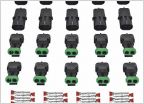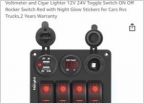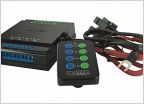-
Welcome to Tundras.com!
You are currently viewing as a guest! To get full-access, you need to register for a FREE account.
As a registered member, you’ll be able to:- Participate in all Tundra discussion topics
- Transfer over your build thread from a different forum to this one
- Communicate privately with other Tundra owners from around the world
- Post your own photos in our Members Gallery
- Access all special features of the site
Hooking solar panels to MPPT Controller
Discussion in 'Electrical' started by WhiteDevil1978, May 28, 2024.


 Help releasing Pins two wire connector
Help releasing Pins two wire connector Can I install a horn in the stock circuit?
Can I install a horn in the stock circuit? Kenwood/Pioneer/Alpine Head Unit?
Kenwood/Pioneer/Alpine Head Unit? Pointers on wiring this correctly
Pointers on wiring this correctly Lost the bolt in the butt
Lost the bolt in the butt LED revers light pods install
LED revers light pods install


